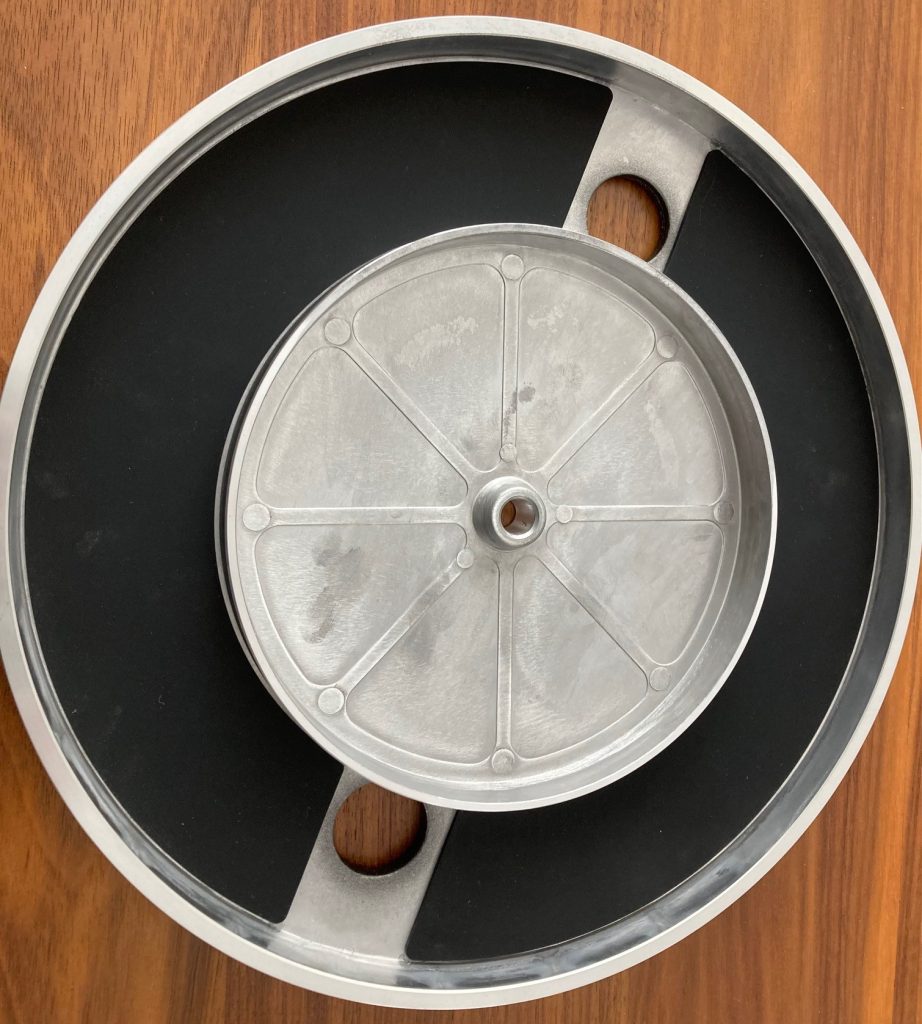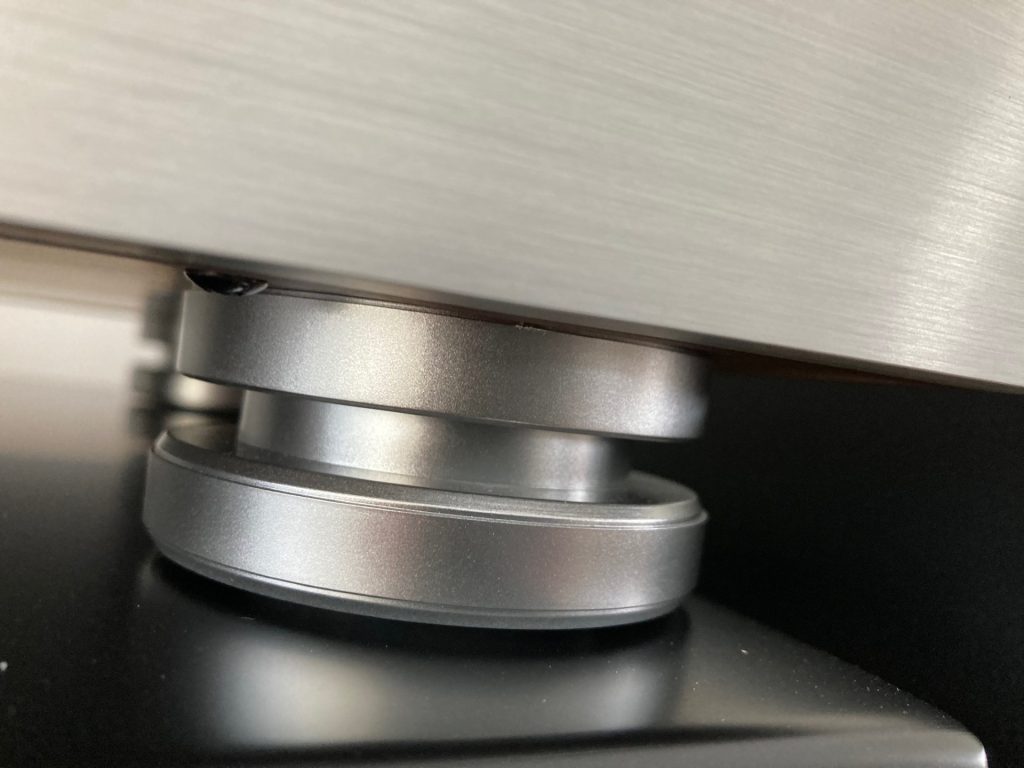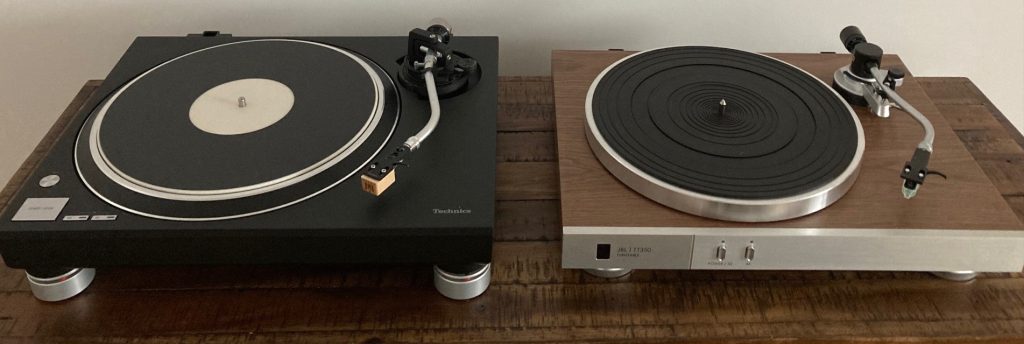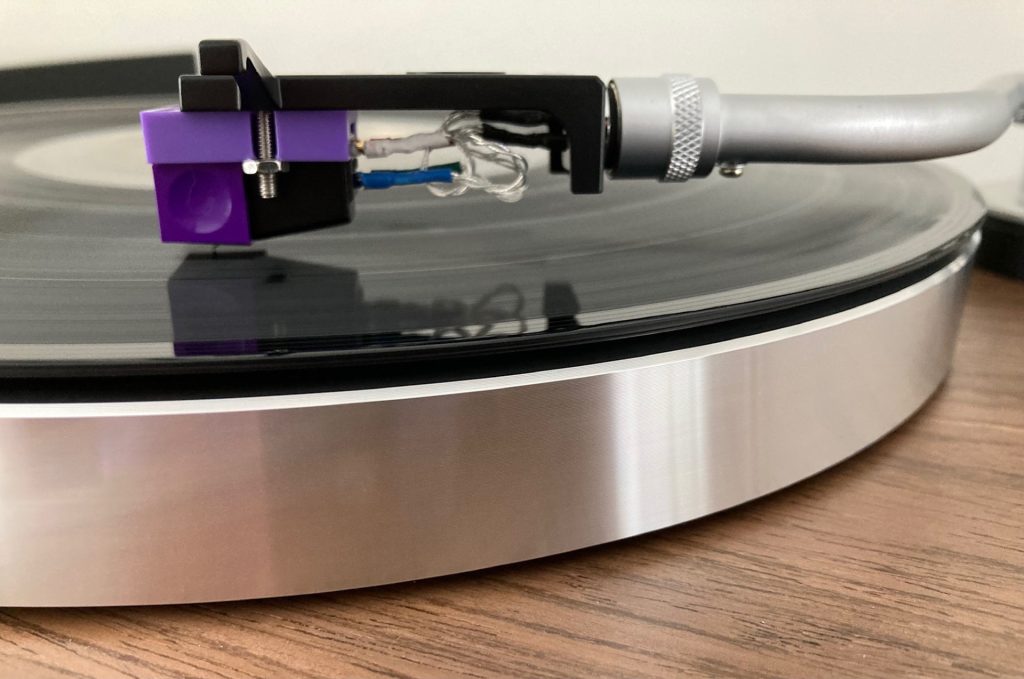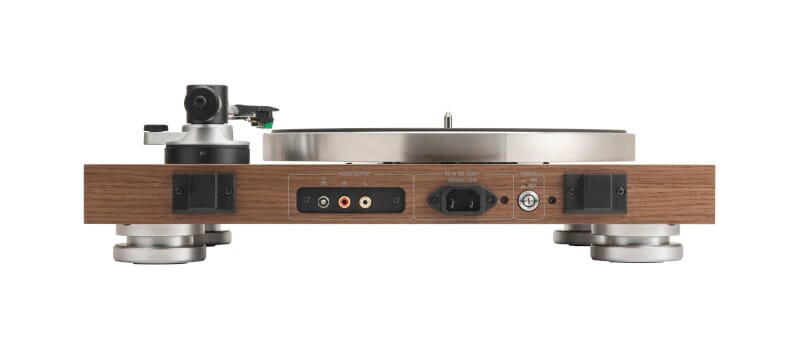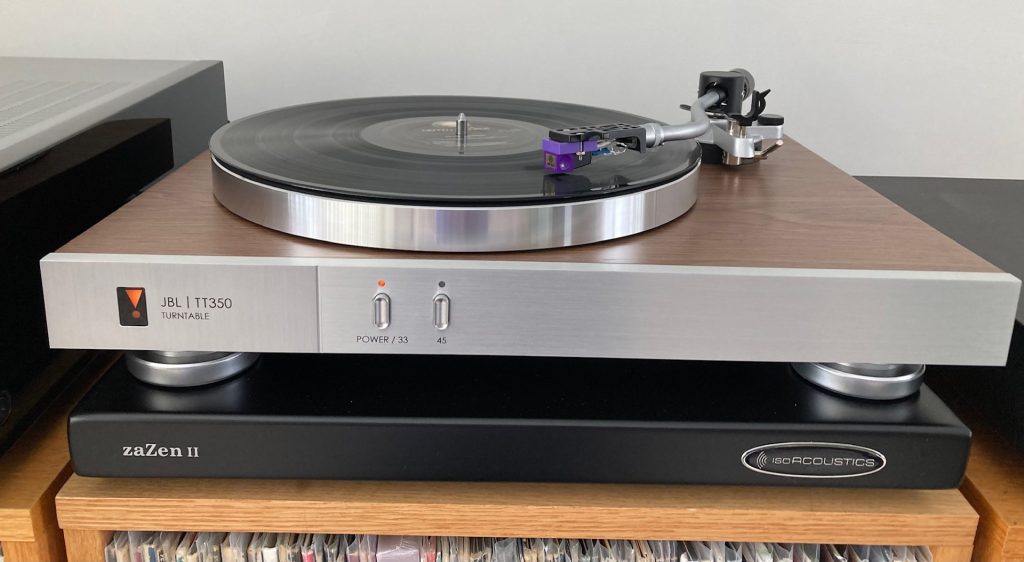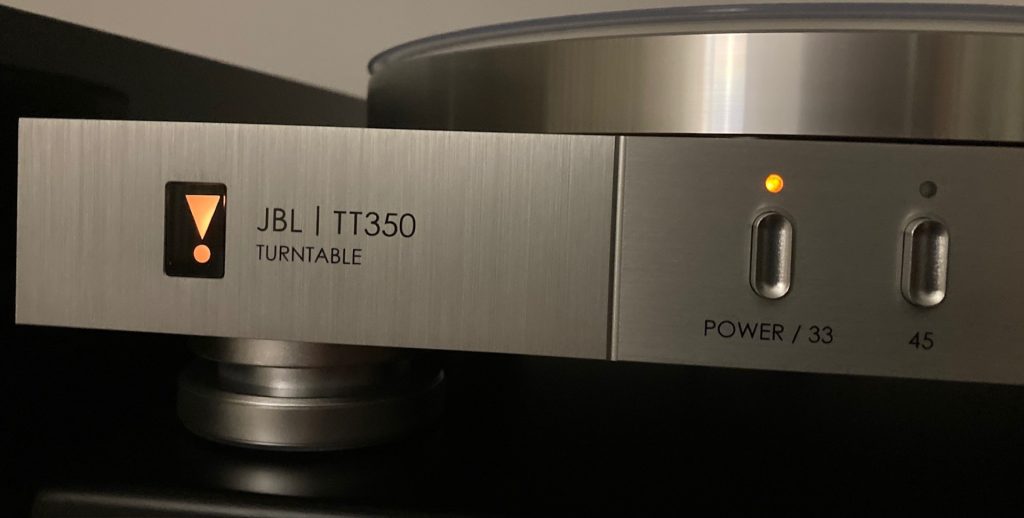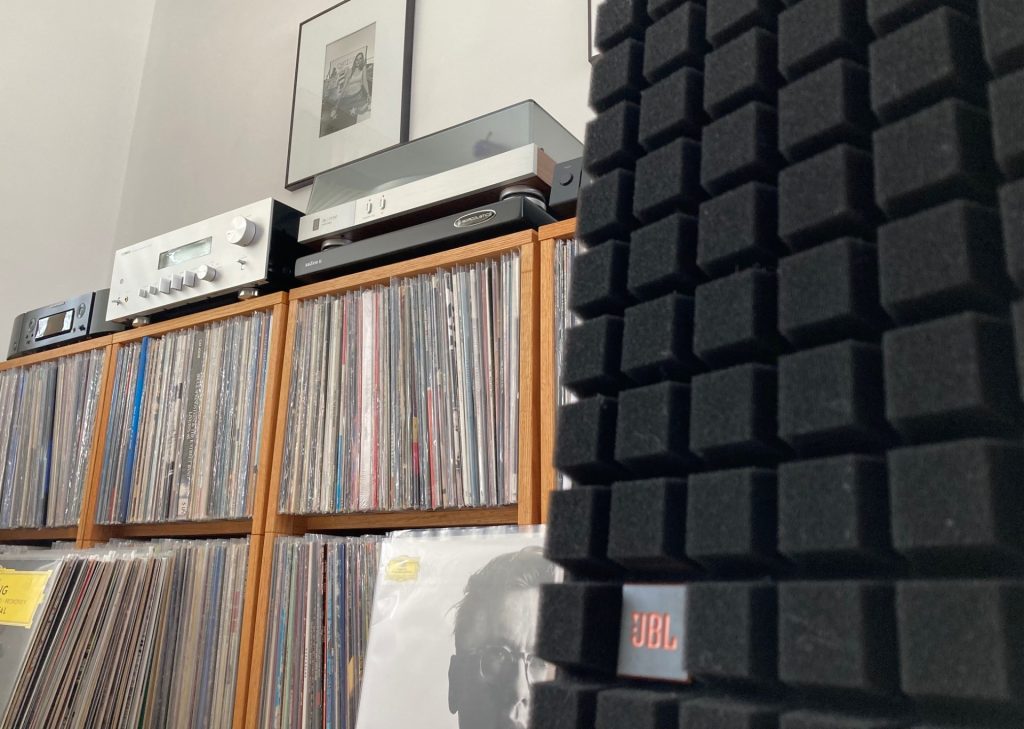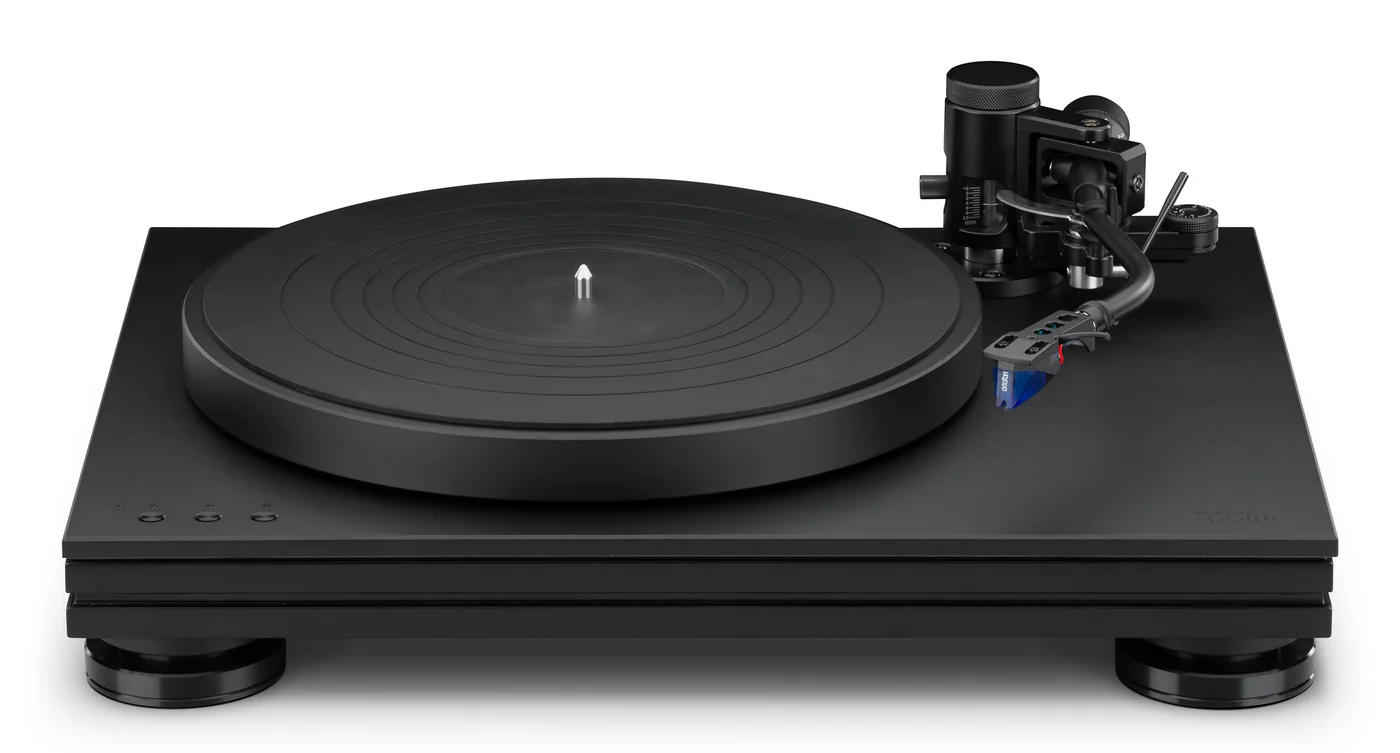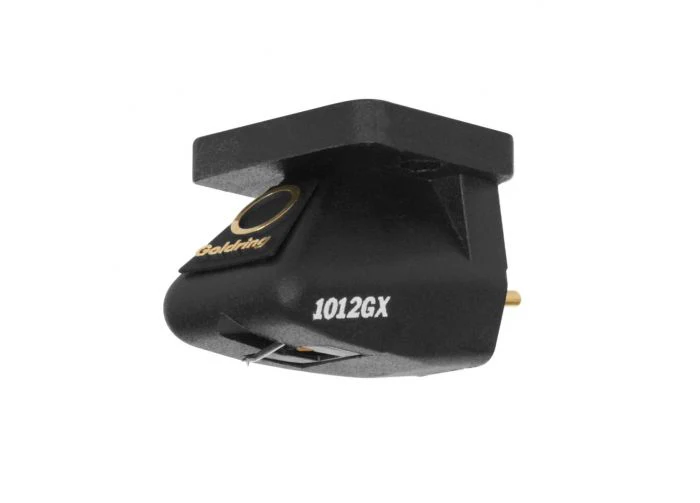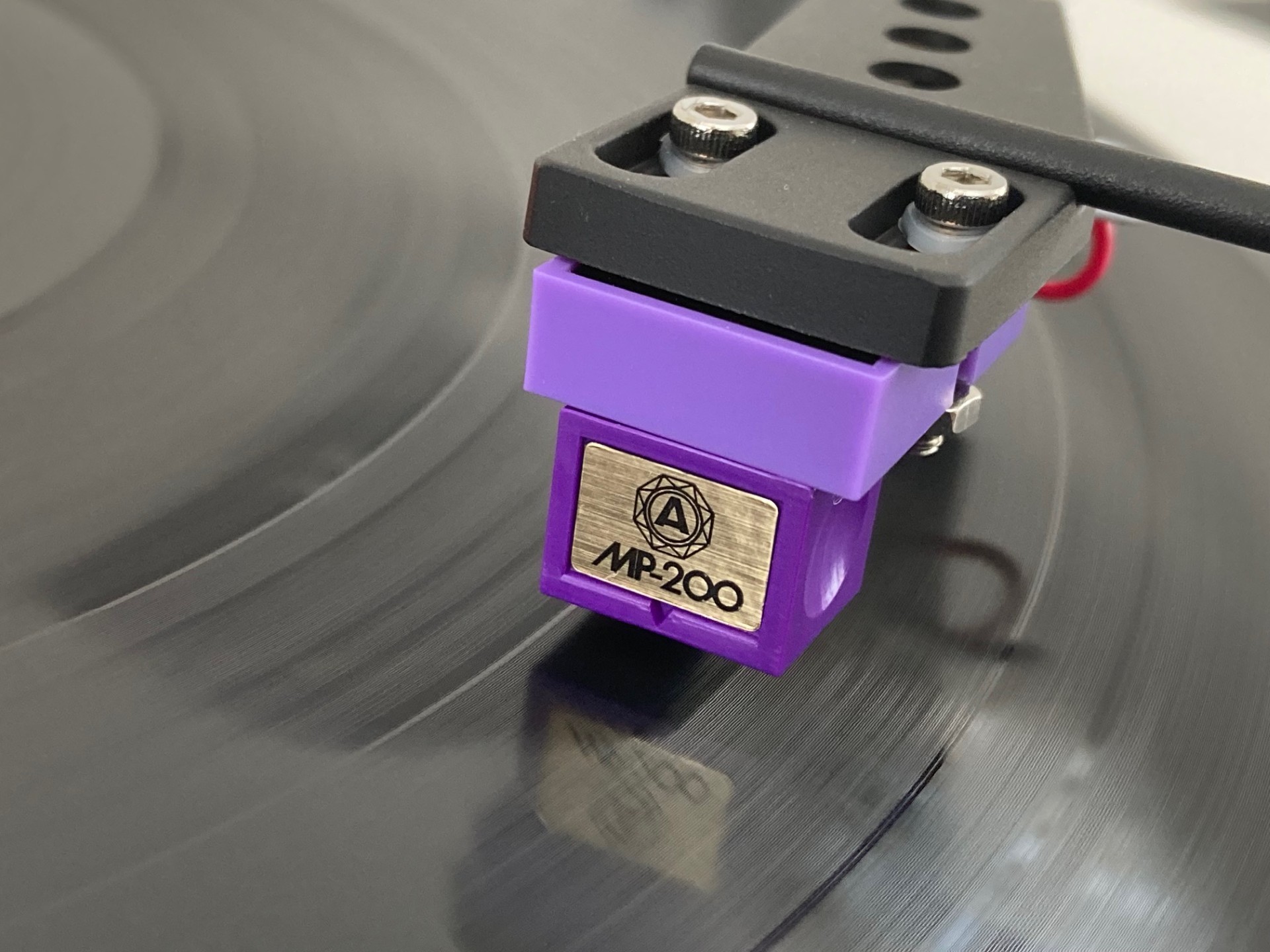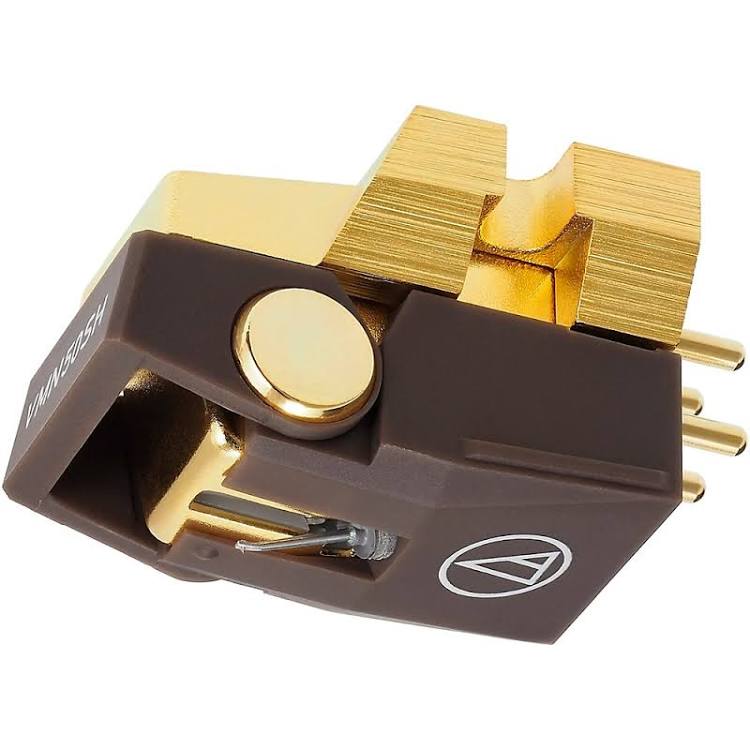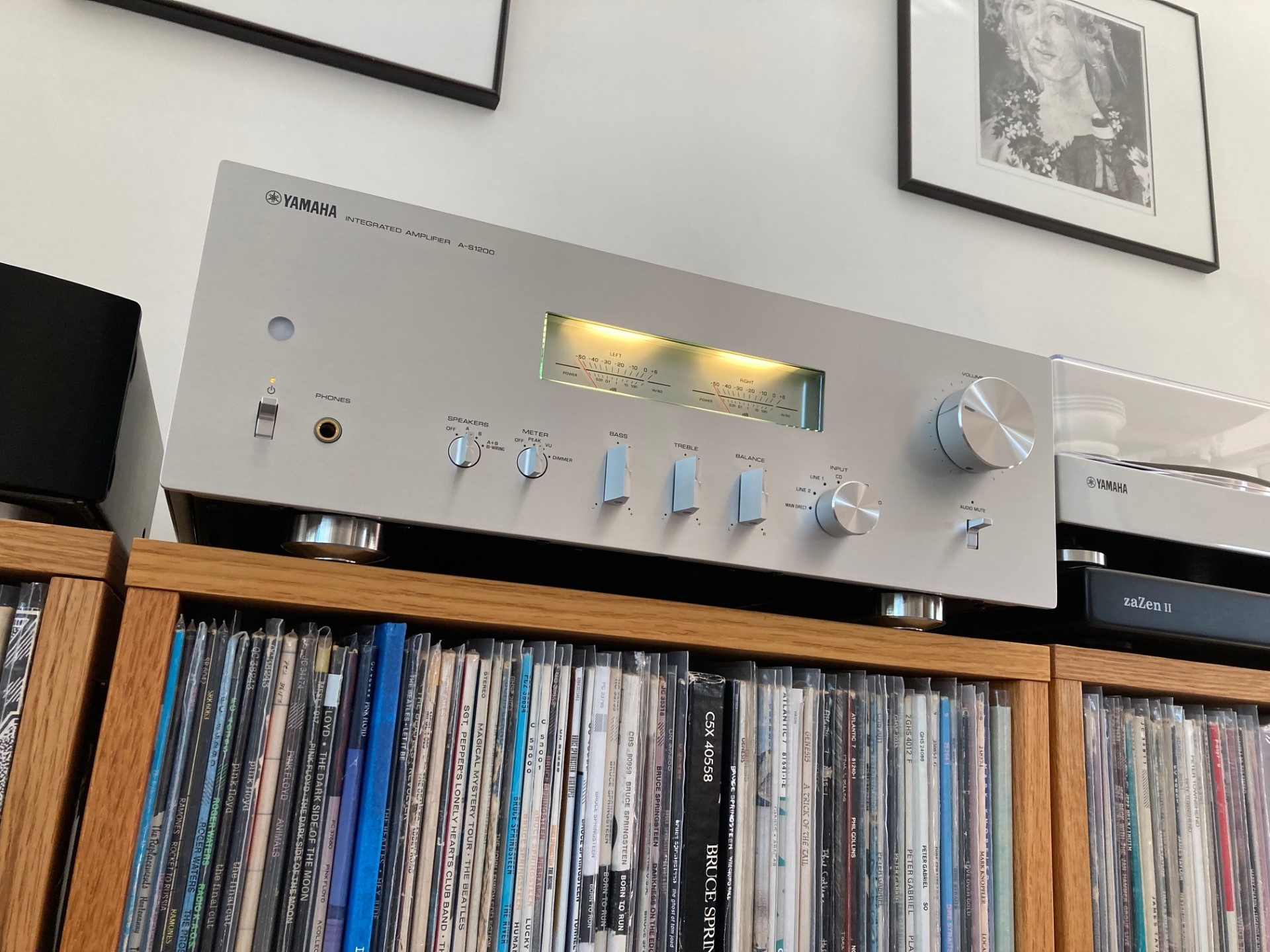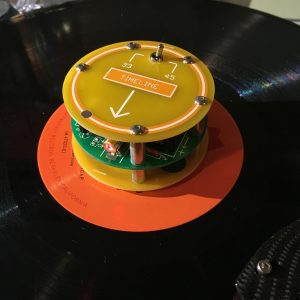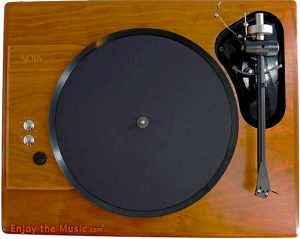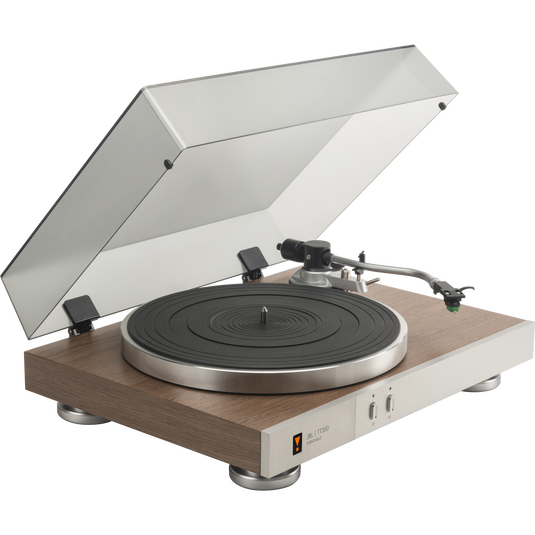
To paraphrase Lawrence Welk: there are more new turntables than ever to choose from, good and bad, and this is certainly one of them. That's actually how a lot of reviews seem to go these days, and who can blame the poor writers? With seemingly every audio (and audio-adjacent) brand either getting into the turntable market for the first time, or back into it after decades away, the glut of products is too much to keep track of. Yet JBL's TT350 Classic managed to cut through the clutter and catch my attention. Maybe it's because, while shopping for big monitors from Harbeth and Spendor a few years ago, I ended up taking home a pair of the company's L100 Classic speakers instead. They're great, I love them, and as a bonus, they cost something like $10,000 less than the big British monitors. Sure, they look retro, but they certainly don't sound it. If JBL can do that, maybe they can work similar magic with components.
Admittedly though, I still wasn't sure exactly what to make of the TT350. Does it lean more toward being a plug-n-play "lifestyle" product, or an entry-level audiophile turntable? Superficially, it nails the lifestyle part, with handsome walnut veneer (genuine, says JBL) and a decidedly golden-age vibe that's like the love child of a 1970s Yamaha and Linn, right down to the Yamaha's s-shaped arm and the Sondek's tinted dust cover. I'm personally thrilled that manufacturers are taking appearance into consideration after years of peddling plain black boxes. All things being equal, why would you purposely choose to stare at something bland, day after day?
Looks, in this case, can be deceiving. The TT350 is less of a lifestyle cash-in and more of an entry-level audiophile turntable. It lacks all of the other lifestyle-type features that have cropped up more recently. Automatic operation? Nope, this one's fully manual, just like a VPI. USB? Bluetooth? Built-in phono preamp? Nope, nope, and nope again. It even uses a chunky detachable power cable instead of the far more common wall wart type. That's because the TT350 is direct drive, necessitating a beefy onboard power supply, unlike the cheaper and easier to implement belt drive/wall wart setup most lifestyle tables use. All are good things, in my book.
Still, once I finally got my hands on one, initial impressions were mixed. JBL built me up during unboxing, only to break me down with an owner's manual tailored for the vinyl-as-a-fashion-statement crowd. For instance, the sales literature promises tonearm VTA adjustment, but there's no explanation of how to take advantage of it in the manual. The universal-style detachable headshell lends itself to relatively easy cartridge upgrades, but no advice is offered on that front, nor is a cartridge alignment template provided, let alone data on the tonearm's overhang and effective mass. (More on that later.) The great-looking feet are adjustable for height, but again, you wouldn't know it since there's zero talk of using them for leveling purposes. These are hardly unimportant details. Now, you could argue "that's what your dealer is for," but come on, tons of people are obviously going to order one online from Crutchfield.
Unsatisfying though the manual may be, the product itself is pretty solid. JBL played it safe, and that approach paid off. There's nothing innovative here, just a smartly done design where every key part is better than it needs to be. The tall, heavy, die-cast platter, for example, is perfectly machined, with no wobbles, and well damped underneath using a rubber-like material. It sits atop a base that's mostly thick MDF. There's no detectable slop in the tonearm bearings, which uses metal in the more important places rather than plastic. And those beefy feet aren't just for looks, they actually do an effective job of isolating the table. If this were intended as audio jewelry for hipsters, JBL could've easily boosted their profit margin by cheapening out on parts quality while maintaining a similar appearance, but they didn't. That shows integrity.
I compared the $999 TT350 to the $1099 Technics SL-100C because they're both cool-looking throwbacks to the 70s, both direct drive, with s-shaped arms using detachable headshells, and even Audio-Technica cartridges from the same line. Neither, of course, has an onboard phono preamp. On that last point, I agree with their designers. These are tables that aspire to owners who'll want better than a throw-in anyway. Separated by only $100 in price, the Technics feels slicker, especially with a tonearm more like a surgeon's scalpel than the JBL's kitchen knife. You would think the result would be obvious: Technics wins, hands down. The reality is less obvious.
Out of the box, using the included $69 Audio-Technica AT-VM95E cartridge, the TT350 positively reeks of potential for better sound. (Early press images from JBL showed it equipped with what looked like a pricier Ortofon 2M, disguised with painter's tape, which was apparently nixed.) Even with this enjoyable but basic cartridge, the superficially handsome TT350 reveals hidden depths, acquitting itself as quiet, stable, and dynamic, so musical notes have the unquestionable ability to both startle and delight. Midrange was electric and exciting, but not over-hyped. It was a little forward overall, but not one-dimensional. Subtle shadings aren't lost on it, they're just not where your attention is necessarily drawn. Aside from matters of taste, there was nothing to strenuously dislike in terms of sound quality.
I wanted to run through some other cartridges in search of more subtle articulation, preferably sidestepping a universal two-point protractor to do so. Unfortunately, as expected, the manual makes no mention of overhang or tonearm effective length. However, I found that the included cartridge is installed with the stylus set at exactly 52mm from the headshell collar's washer, the same as with Technics. That makes sense for an s-shaped tonearm using a seemingly similar geometry. Could this be trusted? To find out for sure, I started one of those online chats with JBL customer service that you just know is going nowhere before it even begins, and that's exactly where it went.
But wait. I quickly received a follow-up email from a specialized support rep for Harman's Luxury Audio Group (JBL Synthesis, Revel, Mark Levinson) who confirmed 52mm is the intended distance. That translates to a 15mm overhang figure, which nets Stevenson-like alignment. And that means a Technics overhang gauge will do the trick, though any overhang gauge, ruler, or calipers capable of measuring precisely to 52mm will accomplish the same. If you want Baerwald or Lofgren alignment, you'll need to find a different method, but why bother when the manufacturer designed the arm for something else? I tried some of my other tools, and couldn't hear any meaningful difference.
Screwing different headshells in and out was initially kind of crunchy, and after a few swaps, a barely visible dusting of metal filings had accumulated beneath the tonearm's bayonet connector. That soon subsided, leading me to believe the tonearm simply had a few residual rough edges inside from the manufacturing process, which I've experienced before on more expensive arms, so no big deal. Maybe the thinking was that most customers will only install the provided headshell once, so why expend too much extra effort on perfect machining?
VTA adjustment, on the other hand, was a problem and a guessing game rolled into one. With no explanation in the manual, I located an Allen head screw that did, in fact, loosen the upper tonearm assembly, allowing it to be lifted in its entirety and then locked in place. (In the photo below, you'll see the screw and also a seam where the silver top section separates from a black mount.) It's crude compared to the slick, smooth, precise Technics adjustment that even includes index marks so you can revisit the same settings quickly after swapping cartridges. Not only that, the tonearm's lowest position seems fixed for the included cartridge, headshell, and mat. It doesn't go any any farther down, only higher up. I suppose that makes sense for ease of assembly; otherwise, each tonearm would probably need to be built, then hand-set using a specially developed tool to the correct height. Then again, is the piece separating the silver upper and black lower portions of the assembly a shim designed to be removed that allows the arm to be lowered, or is it for vibration control, or simply a gasket? I don't know, and I'm not risking damage to find out.
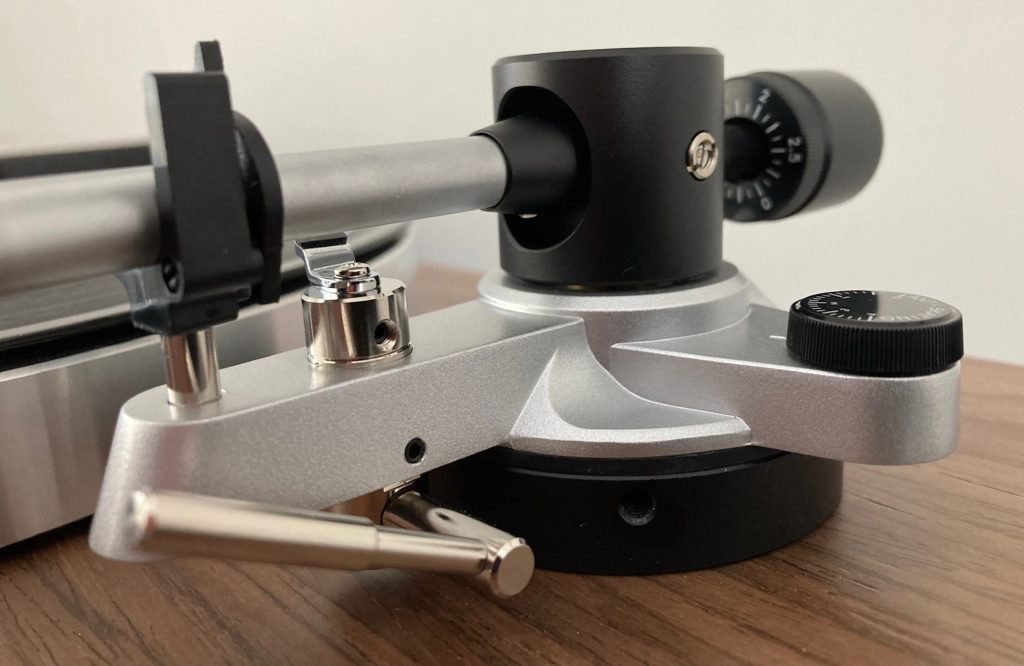
Trying some other cartridge/headshell combinations with different mats of varying thickness sometimes found the cartridges sitting slightly tail up, so the ability to raise the arm in those cases was devoid of value. The included mat is already pretty thin, so adjusting VTA that way requires an even thinner one, though it's doable. In the end, I found the VTA adjustment to be well-intended but fairly useless, and so I proceeded with mats, headshells, and cartridges that, with a little trial and error, got the tonearm mostly parallel to the record surface. I hate to hammer this point home too hard though, since there are tables costing more than this one which offer no VTA adjustment at all.
Speaking of mats, the standard one is fine, though probably chosen more to mimic the cosmetics of vintage tables than anything else. A Herbie's Way Excellent II (reviewed HERE) was better, though the improvement was far less dramatic than I've come to expect. Shockingly, I got the most satisfying results (for me) from a felt mat, which provided the most cohesive sound, with the best sense of air and forward momentum. That says to me the JBL's platter is heavy and well-damped enough that it doesn't need a fancy topper to compensate for any glaring shortcomings. I had similar results with my departed Linn LP12 after futilely swapping from felt to foam to sorbothane to cork and eventually right back where I started with the Linn mat. Again, JBL didn't skimp where it counts.
In the end, while this may seem like a litany of annoying quirks, they really only apply to those who plan on continually tweaking the TT350. Even then, they boil down to little more than an owner's manual that avoids confusing owners with too much information. If it sounds like I'm being overly forgiving, it's because the TT350 is otherwise a really appealing turntable (even more so if you dig its looks), fully up to challenging the usual suspects and possibly bettering more than a few. Any knowledgeable dealer will guide potential owners through these relatively minor hurdles, so buy from one. I found several stores selling them online that can be trusted to set one up properly, with the buyer's choice of cartridge and good advice on upgrades.
Back to listening. The Technics is a remarkable product for the price, delivering a cool, sophisticated performance beyond its price point, with some of the deeper soundstaging, insight, frequency extension, and general resolution that more expensive tables deliver. Over time, the SL-100C (like the 1200MK7 reviewed HERE) has revealed itself to me as possessing a subtly detached character, landing more on the side of precision than full-bodied analog comfort food with some cartridges and phono preamps. The JBL is not that, which is fine. It goes head-to-head with the Technics in terms of pure enjoyment with its more upfront presentation.
What the TT350 has instead is swagger. Don't like it? Kiss my genuine walnut veneer, pal. It offers up a spatially large, colorfully bold, dynamic, butt-kicking sound with conspicuous detail. It's fun as heck, never boisterous or overbearing though, just supremely confident. (If you're the type who sets your TV's picture mode to Vivid or Sports rather than Normal or Movie, the TT350 is your jam.)
The direct drive motor pushing that genuinely heavy platter moves the music along with momentum. It gets toes tapping, not unlike a British belt drive, without sounding precise in a metronomic way that might introduce a too-serious sense of aloofness. Using my ears, aided by two of those admittedly unscientific iPhone turntable measurement apps, it ran at the right speeds, and exhibited very low wow and flutter. As such, the TT350 was pitch stable and nonchalantly capable, sounding like the $1000 component that it is. No problems there.
It took a good stab at fine textures, but really shined in its ability to sort out different elements of every mix, from pop to rock to classical. Moreover, music usually felt all of a piece, without much sense of, say, the impressive bass response sticking out as its own thing. Notes started and stopped with precision, and decayed naturally but perhaps less organically than with a good belt drive in the same price range. Treble was delicate and airy enough, shimmery if not stunningly elegant, but again, certainly befitting a $1,000 package.
On the other hand, general atmosphere and even room tone were well conveyed. Different instruments in the same families were delineated enough, despite the front-row, contrast-rich perspective. Did it lack transparency compared to the Technics? I think so. Another thing the SL-100C does differently is that it places listeners further back in the concert hall, allowing for a subjectively broader view of the performance, whereas the TT350 tended to put me smack-dab in the front row. You want it all for this price? Kiss my genuine walnut veneer, pal. I don't know of any $1,000-ish turntable that fully delivers it. Pick your poison, I guess.
With small-venue live jazz and coffeehouse acoustic performances, the JBL's ability to convey an up-close perspective was a benefit. I felt nearer, both spiritually and spatially, to the performers, and able to hear not just the notes, but more of the instruments making them. The flip side is, big classical performances and rock could, at times, give the impression of sitting too close to the screen in a movie theater. Some people like that, others don't. Don't get me wrong, it wasn't like my nose was smooshed right up against the stage. But I did feel like some denser recordings would have benefited from more breathing room. On quieter passages, surface noise sometimes reared its head more prominently than with the Technics, which I'll chalk up to a less sophisticated drive system, but it's tough to compete with Technics-level engineering here. In that regard, the JBL reminded me more of the Carter-era Japanese direct drives its cosmetics evoke.
The well-done tonearm did a fine job providing a smooth ride for overachieving cartridges like the Grado Opus3 (reviewed HERE), Goldring E3, Shelter 201, Nagaoka MP-200 (review forthcoming) and Audio-Technica VM750SH (reviewed HERE). The debonair Grado in particular brought more class, maturity and wisdom to the party, while the agile, game but still smooth Nagaoka piggybacked on the JBL's strengths. (Also worth noting: the TT350's motor induced no hum with the Grado, suggesting extra attention was paid to motor shielding.)
I'm guessing the tonearm is in the medium mass range. I'm guessing because, you guessed it, the manual omits that information, too. Still, it seems like it should be up to doing justice to cartridges up to around $500. Unless you want to go with a low-output moving coil, which I think might be asking too much, the JBL is perfectly willing to cartridge roll to your heart's content.
In that area, the TT350 was less fussy than average, making even modest cartridges like the included one sound fairly capable within their limits. That's another hallmark of a fundamentally good turntable: it doesn't require an overabundance of thought in terms of synergistic matching to balance out the pluses and minuses of different elements. I know whereof I speak; I'm guilty of massaging budget tables beyond the point of reason to achieve some form of unexpected goodness in the name of sheer, stupid, nerdy fun. Here, you don't have to do that. If you want to keep it truly simple, and avoid the setup speed bumps I've previously described, simply upgrade the included cartridge's stylus to a compatible nude elliptical, MicroLine or Shibata from Audio-Technica, which can be done in seconds and without any need for re-alignment.
For a direct drive though, the platter starts kind of slowly. Regas and Nottinghams get up to speed similarly leisurely. What gives? I can't tell if the motor is intentionally low on torque, or simply needs a few seconds to lock in the speed. It's hardly a deal killer, but it slightly defies one practical benefit of direct drive: tapping a button and having things ready to play in, like, one second. JBL says there's some kind of precise speed control at work, but I'm at a loss to tell you what type of system it might entail.
Once I actually settled into living with the TT350 rather than scrutinizing it, I came to appreciate it even more. The front-panel speed selector buttons feel upscale, though I'd prefer them on the top surface of the table for better usability. The cueing lever is a satisfyingly metallic touchpoint, which works well and gently drops the stylus right where you expect it to go. The power switch is around back, so that's not super convenient, but I suppose one could leave it in "standby" mode if it's going to be used every day.
And, surely, I looked forward to using this table. Not just that, I looked forward to looking at it, too. The whimsical cherry on top is a backlit exclamation point that serves as its power indicator, a clever tip of the hat to JBL's brand heritage, and a clue that this particular player is all about serving up JBL's iconic West Coast sound in a source component. Well done, there.
True, the TT350 is presented and packaged in a way that feels like it got stuck in a tug-of-war between engineers who know about turntables, and corporate product managers who know what sells, or at least think they do. Also very likely: the TT350 isn't built in a JBL factory, but rather, farmed out to the better of two major turntable producers, if my guess is correct. However, this table clearly wasn't the result of lazily mixing and matching off-the-shelf parts as seen so often now. Much of the content here seems commissioned specifically for the TT350, or at least, massaged accordingly. It's simply how many turntables like this are made nowadays, and I'll say it again, factories like the one I suspect JBL chose are capable of turning out quite good products. In fact, having sampled similarly conceived models from Audio-Technica, Music Hall, Reloop and others, the TT350 is the best of the bunch in build quality, sonic satisfaction, and overall attractiveness.
Don't be concerned that an inordinate portion of the TT350's $999 price tag represents cosmetics. It delivers all of the fundamentals of expressive analog and then some, even compared to more technically perfectionist models, while giving up little in overall sound quality. I'd like it even if it were a simple all-black affair. Sure, there's a marketing angle clearly at work here: keeping customers in the JBL family instead of sending them to competing brands for electronics to go with their speakers. But even if you have zero interest in unique styling or JBL as a brand, it's well worth a listen if you like your music informative but with an added pinch of fun, engaging exuberance. Recommended? You bet your genuine walnut veneer, pal.
TT350 turntable
Retail: $999
Harman International Industries, Inc.
8500 Balboa Ave, Northridge, CA
888.691.4171




